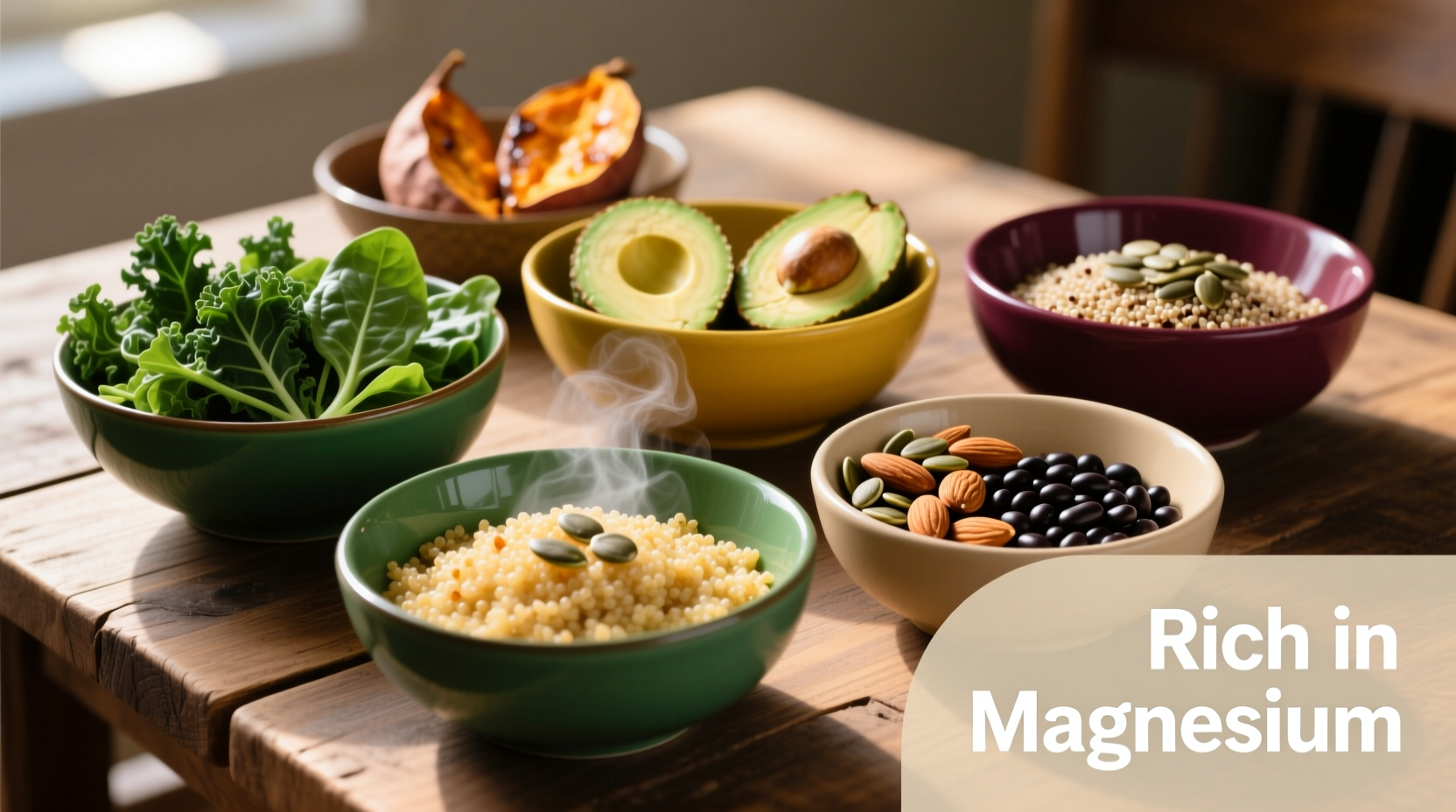Discover how these everyday foods can transform your health through optimal magnesium intake. This guide delivers science-backed information about magnesium-rich foods, organized for practical use in your daily meals.
Why Magnesium Matters for Your Health
Magnesium plays a critical role in over 300 enzymatic reactions in your body, including energy production, muscle function, and nerve transmission. According to the National Institutes of Health, adequate magnesium intake supports healthy blood pressure, bone density, and glucose control. Most adults need between 310-420mg daily, yet nearly half of Americans don't meet these requirements.
Top Magnesium Food Sources by Category
Understanding which foods deliver the most magnesium per serving helps you make strategic dietary choices. We've organized these by food category with verified nutrient data from the USDA FoodData Central database.
Nuts and Seeds: Magnesium Powerhouses
Nuts and seeds consistently rank among the highest magnesium food sources. A single ounce serving provides substantial amounts:
| Food | Serving Size | Magnesium (mg) | % Daily Value |
|---|---|---|---|
| Pumpkin seeds | 1 ounce (28g) | 156 | 37% |
| Chia seeds | 1 ounce (28g) | 111 | 26% |
| Almonds | 1 ounce (28g) | 80 | 19% |
| Flaxseeds | 2 tablespoons (14g) | 77 | 18% |
Leafy Greens: Nature's Magnesium Boost
Dark leafy greens provide magnesium alongside other essential nutrients. Cooking concentrates their magnesium content:
- Spinach (cooked): 157mg per cup (37% DV)
- Swiss chard (cooked): 150mg per cup (35% DV)
- Kale (cooked): 36mg per cup (8% DV)
Legumes: Budget-Friendly Magnesium Sources
Beans and lentils offer substantial magnesium along with protein and fiber:
- Black beans: 120mg per cup (29% DV)
- Lima beans: 105mg per cup (25% DV)
- Edamame: 99mg per cup (24% DV)
Whole Grains: Magnesium in Your Daily Staples
Unlike refined grains, whole grains retain their magnesium-rich bran and germ:
- Quinoa: 118mg per cooked cup (28% DV)
- Brown rice: 84mg per cooked cup (20% DV)
- Oats: 65mg per cooked cup (15% DV)
Fruits and Other Sources
Certain fruits and seafood also contribute meaningful magnesium:
- Avocado: 58mg per medium fruit (14% DV)
- Banana: 32mg per medium fruit (8% DV)
- Salmon: 26mg per 3-ounce serving (6% DV)
- Dark chocolate (70-85% cocoa): 64mg per ounce (15% DV)

Maximizing Magnesium Absorption
Simply eating magnesium-rich foods isn't enough—your body needs to absorb it effectively. Research published in the Journal of the American College of Nutrition shows that certain factors enhance magnesium absorption:
- Pair magnesium foods with vitamin D sources like fatty fish or fortified foods
- Avoid excessive zinc supplementation which can interfere with absorption
- Consume magnesium-rich foods separately from calcium supplements
- Include adequate protein in your diet to support mineral uptake
Practical Ways to Increase Your Magnesium Intake
Transform your magnesium consumption with these simple strategies that fit into any lifestyle:
Morning Boost
Add a tablespoon of chia seeds or flaxseeds to your morning smoothie or oatmeal. This simple addition provides nearly 25% of your daily magnesium needs without altering flavor significantly.
Lunch Solutions
Replace refined grains with quinoa or brown rice in salads. A single cup of cooked quinoa delivers more magnesium than a typical multivitamin. Pair with black beans and spinach for a magnesium powerhouse meal.
Smart Snacking
Keep a small container of almonds or pumpkin seeds at your desk. A one-ounce serving provides nearly 20% of your daily magnesium needs while satisfying afternoon cravings.
Dinner Enhancements
Steam spinach or Swiss chard as a side dish—cooking increases the bioavailability of magnesium. Just one cup of cooked spinach delivers over a third of your daily requirement.
When Food Sources Might Not Be Enough
While dietary magnesium is ideal, certain conditions may require supplementation. The Mayo Clinic notes that gastrointestinal diseases, type 2 diabetes, and chronic alcoholism can impair magnesium absorption. Older adults often have reduced magnesium absorption due to age-related changes in digestive function.
If you experience persistent muscle cramps, fatigue, or irregular heartbeat, consult a healthcare provider before starting supplements. They can determine if you have a deficiency and recommend appropriate treatment.











 浙公网安备
33010002000092号
浙公网安备
33010002000092号 浙B2-20120091-4
浙B2-20120091-4